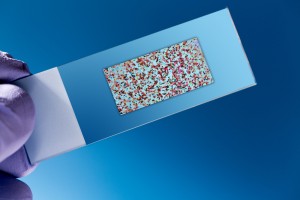 Roswell Park Cancer Institute researchers have identified a novel approach to control aggressive and resistant forms of prostate cancer.
Roswell Park Cancer Institute researchers have identified a novel approach to control aggressive and resistant forms of prostate cancer.
The team, led by Leigh Ellis, PhD, preformed RNA-sequencing using tumors from a murine transplant mouse model that had the capacity to spontaneously progress to metastatic disease. Additionally, using differential gene expression analysis, the team found a total of 254 differentially expressed genes in metastatic tumors compared to matched primary tumors. After further analysis, two genes, topoisomerase IIα, TOP2A (TOP2A), which mediates DNA structure and cell cycle progression, and the histone methyltransferase EZH2, came up as the ones expressed at higher levels in aggressive prostate tumors resistant to enzalutamide and abiraterone acetate therapies.
Even though the two identified genes had already been involved in aggressive forms of this malignancy, these new results are the first to reveal the outcomes of their simultaneous overexpression.
“In two independent preclinical studies involving prostate cancer models that closely represent the clinical dilemma of resistance to androgen-targeted treatments, our results suggested a high degree of therapeutic efficacy for this approach,” Dr. Ellis, Assistant Professor of Oncology in the Department of Pharmacology and Therapeutics said in a news . “This study deepened our knowledge of the etiology of aggressive prostate cancer and will be the basis of future investigations that we hope will lead to discovery of additional biomarkers and therapeutic targets.”
Based on these new results, published in Oncotarget, titled “Top2a identifies and provides epigenetic rationale for novel combination therapeutic strategies for aggressive prostate cancer,” Dr. Ellis and his colleagues now want to target the molecular mechanisms that are influenced and deregulated by Top2a and Ezh2. This could render these two genes as potential biomarkers to be targeted by different cancer therapies, since in addition to prostate cancer they have also been implicated in other types of tumors.
“Overall, our studies suggest that patients screened for TOP2A and EZH2 expression could exhibit greater response to a combinational treatment involving low dose etoposide combined with EZH2 inhibition. Further, our data suggests that this combination therapeutic strategy can be beneficial independent of AR status, and provides rationale for continued clinical development”, the authors write in their study.

